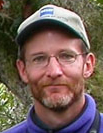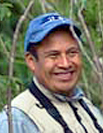|
| |
|
|
| |
| Tour Guides |
|

|
|
|
|
|
|
| |
|
|
| |
| |
|
|
 |
|
Robert Straub (Tour Leader)
Source: InsideMéxico By: Aran Shetterly

Nearly 10 years ago a gangly American from Delaware flew to Mexico City with his binoculars and a passion for birds. No one he asked in Mexico City had heard of the town he was headed for, but a day later he found a bus to Veracruz and eventually to Ciudad Cardel.
Robert Straub caught what he calls “the migration bug” years earlier, while working as a bird researcher in national parks around the United States. He studied migratory birds in New Mexico and Utah. “When you are in that world,” he explains, “you hear about Veracruz."
Unless you are birder you probably don’t know that the small, coastal town of Cardel (pop. 8,000) is one of the best places in the world to see migrating raptors -- birds of prey that hunt primarily with their talons -- like hawks, eagles, falcons, kites, ospreys, and vultures.
Each year between mid-August and mid-November, from the top of the Hotel Bienvenido in downtown Cardel, one can observe up to 500,000 birds a day as they sail by, riding the coastal thermals south for the winter.
“It’s a natural phenomenon,” Straub said over coffee in Xalapa. In fact, this “River of Raptors” is one of the last great bird migrations in the world.
When Straub showed up in 1997 he planned to visit for just three months, but it wasn’t long before he decided to stay. He gave himself three goals: learn Spanish, learn the tropical birds, and find out if he liked guiding birding groups. The key to the last, he says, is whether or not you “can handle ten strangers for two weeks.”
“The fantasy of any birder,” says Straub, “is to have someone else pay for you to travel the world and look at birds.” Making that dream come true usually involves becoming a guide.
“There’s a certain trait you have to have which is that you have to really want people to see this thing you see. And,” he adds with a half smile, “there’s probably an ego gratification thing. You are the expert.”
Straub loves sharing his bird knowledge with strangers. He also came to believe that by igniting and nurturing a love of birds in others, he might also spread his desire to preserve bird habitat. In addition, birds are good business. A 2002 study by the US Fish and Wildlife Service reports that the estimated 46 million birders in the United States spend 32 billion dollars a year tailing their feathered friends.
Straub set himself up in Xalapa teaching English. Eventually, he got work with Pronatura, the Mexican conservation organization, as coordinator of their Tourism for Conservation program. In 2003, he helped found the Club de Observadores de Aves de Xalapa to foster local interest in birds. And, last year with Pronatura, he published the Site Guide to the Birds of Veracruz.
His next venture is as a Mexican distributor for top binocular manufacturer Eagle Optics. Straub sees his new job as just one more way to raise awareness of the importance of birds in Mexico. Can they save wild land in Veracruz? If he can create a river of birders, Straub believes they can. |
| |
|
|
|
|
| |
|
|
| |
| |
|
|
 |
|
Roque Antonio Santiago (Assistant Guide)

My name is Roque Antonio Santiago and my birthplace and home is Teotitlan del Valle, Oaxaca, a town not only famous for its artisan weavers, but located close to resident populations of West Mexican Chachalaca, Long-tail Wood Partridge, beautiful Hummingbird, Boucard's Wren, Slaty Vireo, Dward Vireo, Bridled Sparrow and Oaxaca Sparrow, among many other species.
I began birding when I was 25 years old have been guiding groups since 1999. My clients have told me that I have excellent eyes and ears, and I consider myself very familiar with the locations, habitats, and behaviors of the birds of Oaxaca, Veracruz and Chiapas. I speak Zapotec at home, Spanish when I'm out and about and typically English when I guide birders. |
| |
|
|
|
|
| |
|
|
| |
|
|
|